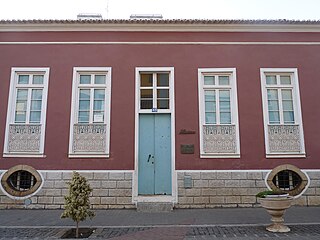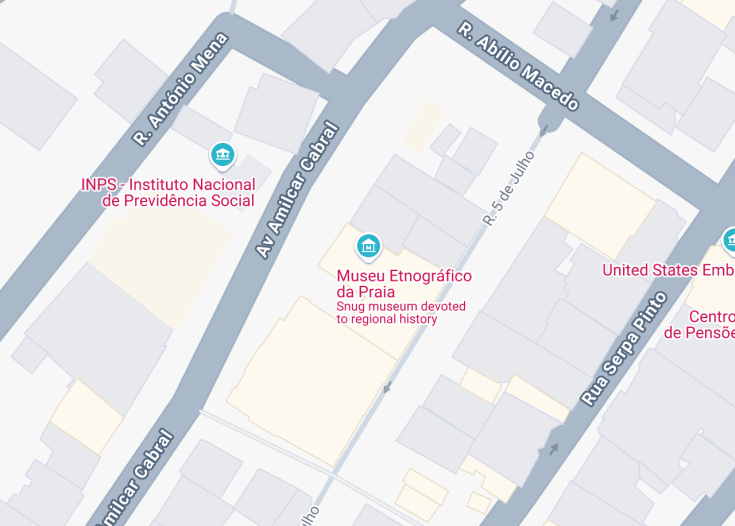The Museu Etnográfico da Praia, located in Cabo Verde’s capital, stands as a vibrant beacon of culture and history. Housed in an 18th-century building that was once a customs house, this museum offers a deep dive into the traditional lifestyles of the Cabo Verdean people. Its exhibits showcase a wide array of artifacts that include traditional clothing, agricultural tools, and indigenous musical instruments. The museum not only highlights the rich ethnic diversity of Cabo Verde but also educates visitors about the historical influences—from African to Portuguese—that shaped the islands’ unique cultural tapestry.
To enhance your museum experience, consider visiting during the late morning when it is less crowded. This timing allows you to engage more deeply with the exhibits without the rush.
For a comprehensive understanding of Cabo Verde’s culture, pair your museum visit with a walk through the old city area of Praia, where the architecture compliments the stories told within the museum.
Museu Etnográfico da Praia: A Window into cabo verde’s culture
Located in the capital city of Cabo Verde, the Museu Etnográfico da Praia serves as a quintessential cultural beacon that guides visitors through the rich and diverse history of the islands. Housed in an old colonial building, the museum’s exhibits provide a comprehensive view of the traditional lifestyles, artifacts, and crafts of Cabo Verdean people. It’s an excellent place for tourists who want to delve deeper into the local customs and heritage.
The museum showcases various aspects of daily life, including agriculture, fishing, and traditional music, bringing the archipelago’s past vibrantly to life. For anyone looking to understand the social and cultural dynamics of this island nation, the Museu Etnográfico is an indispensable stop. Its easy accessibility in the heart of Praia makes it an ideal starting point for a cultural exploration of the city and beyond. Whether you are a history buff or simply curious about the local culture, the details and artifacts here offer a fascinating snapshot into how the islanders have lived and thrived over the centuries.
Exploring Heritage at Museu Etnográfico da Praia
Welcome to a treasure trove of Cabo Verdean history. Inside, visitors can marvel at traditional Cape Verdean clothing, intricately woven fabrics, and artisanal tools, each piece telling a story of survival and adaptation. Traditional music instruments, like the cavaquinho, drum, and ukulele, highlight the musical spirit of the islands, illustrating the role of rhythm and melody in daily life and ceremonial practices. Don’t miss the detailed exhibits on the salt industry, which was vital in shaping the islands’ economic past. For a deeper understanding, guided tours are available, offering insights into the significance of each artifact and the overarching culture they represent.
A Glimpse of the Past: Praia’s Historic Salt Flats Exhibit
This part of the museum captivates visitors by recounting the story of Cabo Verde’s historic salt flats, once the backbone of the country’s economy. The exhibit features photographs, tools and narratives that depict the arduous yet vital labor integral to the salt extraction that was pivotal for trade and local livelihoods. Through this exhibit, guests gain a newfound appreciation for the resource that played a crucial role in the development and survival of the islands, offering a unique perspective into the economic history of Praia.
Explore the Charm of Museu Etnográfico da Praia
The Museu Etnográfico da Praia is a captivating destination suitable for visitors of all ages, including kids, couples, and older people. This museum offers an intriguing glimpse into the rich cultural heritage of Cape Verde through its extensive display of traditional artefacts, costumes, and tools used in daily and ceremonial life. Whether you’re a history buff, a cultural enthusiast, or simply looking for a family-friendly activity, the museum provides an informative and engaging experience.
Best Times to Discover Museu Etnográfico da Praia
The museum is enchanting year-round, but the best time to visit is during the cooler, drier months from November to March when the climate is most pleasant. During these months, you can comfortably explore the museum’s offerings without the intense heat that can occur during other times of the year.
Local Cultural Events
Consider planning your visit during local cultural events, such as the Kriol Jazz Festival, usually held in April. This event adds an extra layer of cultural enrichment to your museum experience, as it showcases a blend of local and international music right in the heart of Praia.
Accessibility and Limitations at Museu Etnográfico da Praia
Accessibility and visitor experience are prioritized at Museu Etnográfico da Praia.
Accessibility
Limitations
- Photography restrictions: Flash photography is prohibited
- Large bags must be stored in lockers at the entrance
Notes to visitors
- Please do not touch the exhibits to help preserve them for future visitors.
- Guided tours are available but must be booked in advance.
General Information
Details for your visit to Museu Etnográfico da Praia
Location
Museu Etnográfico da Praia is located in the vibrant heart of Praia, near several major landmarks such as the Presidential Palace and Alexandre Albuquerque Square, making it easily accessible to visitors.
Address: 45 Rua 5 de Julho, Praia, Cape Verde
Opening Hours
The museum is open from Monday to Saturday, from 9:00 AM to 5:00 PM. It is closed on Sundays and public holidays.
Traveling to Museu Etnográfico da Praia
Car
Visitors can drive to the museum, which offers on-site parking facilities. Here’s how long the drive will typically take:
| Route | Distance | Travel Time |
|---|---|---|
| From Nelson Mandela International Airport | 5 miles (8 km) | 15 minutes |
| From Cidade Velha | 10 miles (16 km) | 30 minutes |
| From Tarrafal | 44 miles (71 km) | 1 hour 20 minutes |
Bus
Several bus lines serve the area near the museum, connecting it conveniently with major parts of the city and surrounding areas. The central bus stop is a 5-minute walk away from the museum.
Nearby Attractions
Enhance your visit by exploring nearby attractions:
- Presidential Palace – 0.3 miles (0.48 km)
- Alexandre Albuquerque Square – 0.4 miles (0.64 km)
- Plateau of Praia – 0.5 miles (0.8 km)
- Cabo Verde National Library – 0.6 miles (0.97 km)
- Nossa Senhora da Graça Church – 0.7 miles (1.13 km)
- Praia City Hall – 0.8 miles (1.29 km)
Common Questions
What type of artifacts can be found at Museu Etnográfico da Praia?
Are there any interactive exhibits at Museu Etnográfico da Praia?
What are some must-see exhibits at Museu Etnográfico da Praia?
How are the exhibits at Museu Etnográfico da Praia sourced?
Is there a gift shop at the Museu Etnográfico da Praia?
Does Museu Etnográfico da Praia offer guided tours?
Can photographs be taken inside Museu Etnográfico da Praia?
Are there facilities for disabled visitors at Museu Etnográfico da Praia?
Can events be hosted at Museu Etnográfico da Praia?
How is the cultural significance of Cabo Verde represented at the museum?
What educational programs are available at Museu Etnográfico da Praia?
How often are exhibits updated or rotated at Museu Etnográfico da Praia?

Is the Museu Etnográfico da Praia worth visiting?
For those looking to delve into Cape Verde’s cultural history, the Museu Etnográfico da Praia is a noteworthy stop. This museum offers tourists a deep dive into the local customs and lifestyles that have shaped the islands. Its collections include traditional costumes, musical instruments, and artifacts that provide insight into the daily lives of Cape Verdeans.
While the museum is relatively small, its carefully curated displays make efficient use of the space, presenting a well-rounded cultural narrative. One potential downside is that explanations are primarily in Portuguese, which might pose a challenge for those not familiar with the language. Nonetheless, for those interested in ethnography and the stories of native peoples, the Museu Etnográfico presents a valuable, immersive experience.









